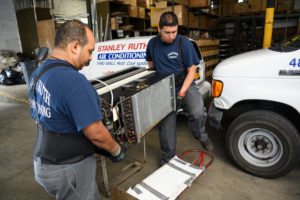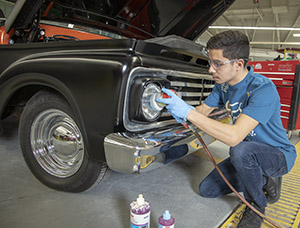
Are you experiencing Rough Idle or increased RPM? You may have a vacuum leak. These symptoms can be caused by a variety of factors, including a defective gasket in your intake manifold. You can find out what you should do and what symptoms to look for. You will need to remove the intake gasket in order to solve the problem.
You are not idle
Vacuum leaks can cause a Ford Focus to idle rough. This could be due to many factors. The problem could be caused by a faulty fuel/air mix. In this case, it may be the Idle Control Valve (IAC), which opens the air mixture to the engine during idle. If your engine is experiencing a rough idle with no check engine lamp, it may be time to have the work done.
A faulty mass airflow sensor may also be the cause of your car's rough idle. The mass airflow sensor measures how much air is entering the fuel injection system. The vehicle's computer uses this data to deliver fuel. These sensors can get dirty and malfunction over time. When they are affected, they can cause the car to idle unevenly or even stall. These parts can be replaced to ensure smooth idle and prolong the engine's life.

Raise in RPM
Vacuum leaks can cause unusual noises in your car's engine. There are different types of leaks that occur in the car's engine, so a trained ear is essential for determining the exact location of the problem. A leak in the engine's vacuum system can cause the vehicle to idle higher than usual. This is due to extra air entering the combustion chamber, which increases RPMs.
A significant vacuum leak can cause an engine to run at a higher speed than normal and make the idle more rough. It may sound like the engine isn't getting enough air while the vehicle is being driven. The tachometer needle will fluctuate between 0 and 100 rpm. A vacuum leak can cause the vehicle's RPM to rise above normal. However, it will still be a problem.
Check engine light
When your Ford Focus has a vacuum leak, P2279 is the OBD-II code. Depending on the model year and engine type, the repair procedure will vary. The most common cause of this code will be a vacuum leak within the air intake system. Once you have found the problem, the remaining codes can be solved on their own. Vacuum leaks are dangerous, so you should only try this type of test when your engine has been completely cold. You should also keep a fire extinguisher on hand in case you need it.
You may notice an increased idle RPM, or a rough idle as signs that there is a vacuum leak. Your engine may run at higher RPMs but struggle to maintain a steady idle. You might also experience rough acceleration and stalling. The Long Term fuel trim may change, meaning that your car's engine is lean at idle. Contact a mechanic immediately if you have any of the symptoms.

Intake manifold gasket leaks
If you have noticed your Ford Focus is experiencing excessive engine rumble or stalling, it's time to get it checked out. You can have it checked by a mechanic, who will charge around $334. A DIY repair can help you save a lot of money and avoid the dealership visit. To estimate the cost of replacing a gasket, most Ford Focus mechanics use an estimator that includes labor and parts.
If you notice a puddle or steam under your car, you're probably experiencing a leaky intake manifold. This can mean a number of different things: a bad intake manifold gasket. Bad gaskets will impact the air-fuel relationship, which is the primary factor in how strong a car can produce. Leakage in the intake manifolds can also cause cooling system problems and possibly stalling.
FAQ
What length is an automotive mechanic apprenticeship?
It takes three years to complete an apprenticeship as an automotive mechanic. This includes two year at school as well as two years as an apprenticeship. The first year teaches you all aspects, from theory to practical skills and safety procedures. This year, you will also learn how to safely and efficiently use tools. After the first year, a second year will be spent on-thejob training. This year you'll get experience in different trades. You'll have the opportunity to attend formal courses during these periods too.
The final year of this program is spent in obtaining qualifications and becoming certified in your field. These include NVQs (National Vocational Qualifications), which are awarded after passing exams covering specific topics within the industry. The HNCs (Higher National Certificates), on the other hand, cover general subjects like customer service and management. City & Guilds certificates can be obtained for individuals who want to learn certain trades.
What are the requirements of an auto technician?
You need to have high school diploma or GED and good grades in English as well as maths. Also, you must be able read and write. The written test will be passed and you will then have to take several practical exams before you can begin work.
How long does it take you to become a great mechanic?
You need to have years of experience and practice before you can become a master mechanic. Working under the guidance of a professional mechanic is the best way to learn how repair cars.
You will have to spend time in a garage learning about cars and mechanics. You will need to be familiar with mechanical engineering books about mechanics, car design, and other topics.
You will also need to go to auto school.
The most important thing is to start early. You don't have to wait until you are older to start studying automotive technology. If you want to qualify as a mechanic, get started now!
How do I prepare to be a mechanic apprentice?
It is important to have an understanding of what you are going into. You must understand the workings of cars. This will help you to plan your first day in the garage.
You also need to know how to fix simple problems such as broken lights, tires, etc.
This should help you learn how to diagnose issues and repair them yourself.
For the purpose of putting them back together again, you'll need to be able to identify how each piece fits together.
Finally, it is important to know how tools can be used safely and efficiently.
All these things will help you to become a competent mechanic.
Statistics
- According to the BLS, total auto technician employment is expected to exceed 705,000 by 2030. (uti.edu)
- Apprentice mechanics earn significantly less hourly than mechanics who have completed training, with a median wage of approximately $14.50 an hour, according to PayScale. (jobhero.com)
- There were 749,900 jobs available for automotive service technicians and mechanics in 2016, which is expected to grow by six percent through 2026. (jobhero.com)
External Links
How To
How to properly diagnose and repair your vehicle
The symptoms of your vehicle are the first thing you need to look at in order to determine whether it is in dire need of repairs. You can then follow these steps for a proper diagnosis of your vehicle.
-
Check engine lights. You should inspect the dashboard lights, such as the engine light indicator and the oil pressure gauge. Also, check the battery light indicator. If they have been flashing for more days than usual, it could be a sign that something is wrong with the vehicle.
-
Pay attention to the treads on your tires. Tires can become worn and cause problems in handling and braking. You should inspect the treads on your wheel. They should be clean and smooth. To do this, remove the wheels and take them out. A flashlight can be used to check how worn the treads are.
-
Check the level of brake fluid. You should always keep track of the amount of brake fluid in your vehicle. This will ensure that your brakes run smoothly. Your brakes may fail if the brake fluid level drops.
-
Test the suspension system. The suspension system in vehicles absorbs vibrations and shocks. This suspension system provides greater control and smoother acceleration and deceleration. A suspension problem can cause your vehicle to feel wobbly and shake uncontrollably. To determine whether your vehicle may have a suspension issue, you can try to put weight on the rear or front axle and watch the movement.
-
Examine the steering column. The steering column connects the steering wheel to all other components of the vehicle. Sometimes, steering columns are damaged by accidents. You should replace your steering column if it feels loose or unstable.
-
Pay close attention to the exhaust tube. The exhaust pipe helps move gases from a combustion chamber into the atmosphere. You can let harmful fumes into your home if your exhaust pipes crack or leak. If your tailpipe bends, it is important to fix it immediately.
-
Look under the hood. Check under your hood for any unusual or missing components. You could have fluids leaking from the engine. You should also contact a professional technician if there is an unusual odor coming from the engine compartment.
-
The air filter should be checked. The outside environment can collect dust and other debris in your vehicle's air filters. A dirty filter can lead to a poor vehicle's performance. Replace your air filter regularly.
-
Check the fan belt. The fan belt that connects your vehicle to the transmission is called the engine fan belt. If the fan belt fails, the engine won't start. It is very easy to replace your belt. All you need to replace the belt is a screwdriver with pliers.
-
Make sure you inspect the radiator hoses and hoses. The radiator hose transports water from radiator to engine. If the hose becomes damaged or cracked, hot liquid can be emitted onto the engine. To repair the leaky hose, all you need is a pair if needle-nosepliers.
-
Check the windshield wipers. Windshield wipers use electricity for snow and rain removal. If they stop working they could leave streaks behind on your window glass. The solution is to change the washer fluid.
-
Verify the condition of your battery cables. The battery cables provide power for the electrical systems in your car. Always disconnect the negative wire before you replace batteries. Failure to do so can damage your alternator.
-
You should check the headlights. Headlights are used to illuminate the road ahead. They can make it difficult to see if they stop working. You can check the bulbs to make sure they aren't burned out.
-
Make sure you have your lights on. The lights are there to warn other drivers if they approach you at night. It could cause distraction and even lead to an accident if it doesn't work.
-
Make sure you check your brakes. Before you get in a car accident, your brakes will be slowing down your vehicle. You may lose control of your vehicle and crash if the brakes don't function properly.
-
Change the oil. Keep your engine lubricated with oil. This oil helps to prevent metal parts becoming too worn out. Changing the oil every month is recommended.